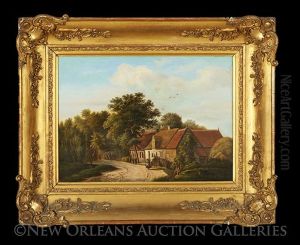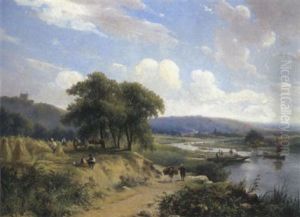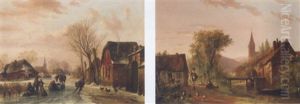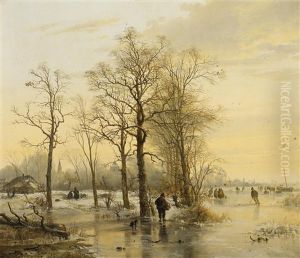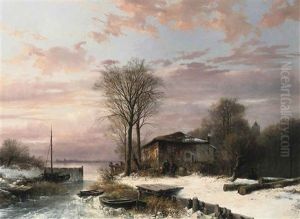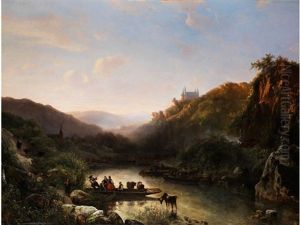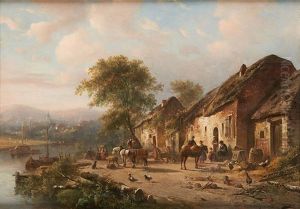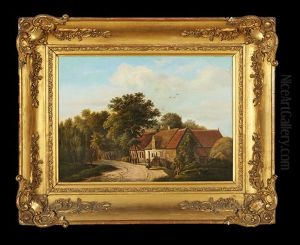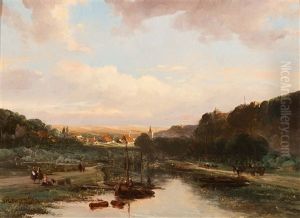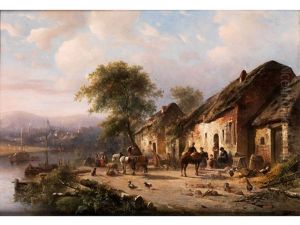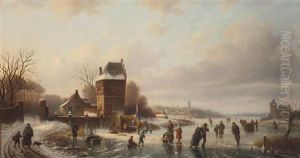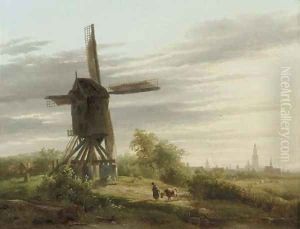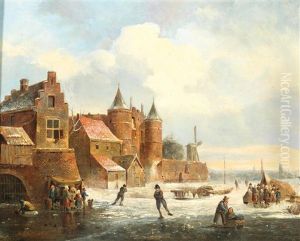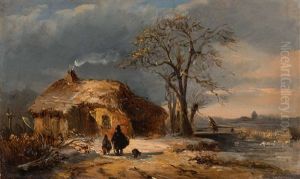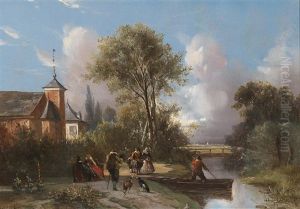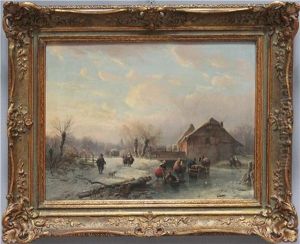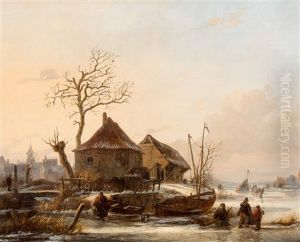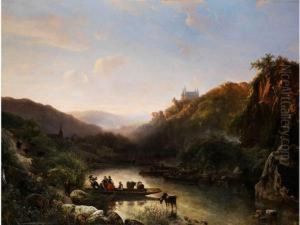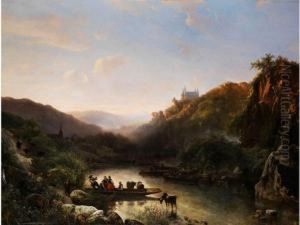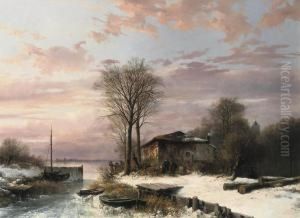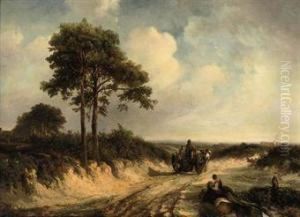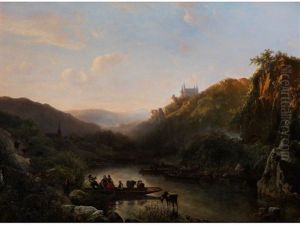Abraham Van Der Wayen Pieterszen Paintings
Abraham van der Wayen Pieterszen was a Dutch colonial American painter whose exact birth and death dates are not well documented, but he is known to have been active in the 17th century. His work primarily falls into the period of Dutch colonization in what is now the United States, notably in the area that would become New York, which was then known as New Amsterdam. Pieterszen's heritage and artistic training are rooted in the Dutch Golden Age, a period of great wealth and cultural achievement for the Netherlands, which had a significant influence on his style and subjects.
Pieterszen's works are relatively rare, and as such, he is not as widely recognized as some of his contemporaries. However, he is known for his religious and portrait paintings. One of his most notable works is 'The Baptism of the Eunuch,' which is an example of the kind of biblical scenes that were popular among Dutch settlers of the time. This work is indicative of the spread of Dutch culture and artistic practices to the New World, as well as the melding of European and American influences that would characterize the colonial period.
As with many artists of the time, little is known about Pieterszen's life and training. It is likely that he was born in the Netherlands and brought his artistic skills to New Amsterdam, where he would have been one of a small number of professional painters. In the absence of extensive records, Pieterszen's life and career must be pieced together from the scant number of paintings attributed to him and from historical records of the Dutch colonial period.
Despite the limited information available on Abraham van der Wayen Pieterszen, his work contributes to our understanding of the cultural and artistic landscape of Dutch colonial America. His paintings offer a glimpse into the world of the early settlers and the ways in which their European heritage was maintained and adapted in their new environment. The art historical significance of Pieterszen and other colonial painters lies in their role in documenting and shaping the visual culture of a formative period in American history.
